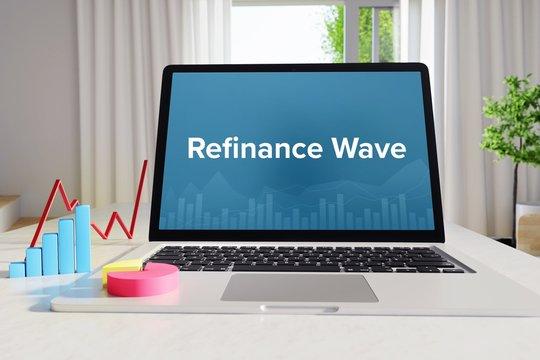What Is a Refinance Wave?
A refinance wave occurs when a shift in interest rates prompts homeowners to refinance their mortgages in increased numbers.
While there is no specific metric for determining what constitutes a wave, financial analysts studying real estate markets may watch for signs of a refinance wave when short-term interest rates change.
KEY TAKEAWAYS
- A refinance wave occurs when a shift in interest rates prompts more homeowners to refinance mortgages.
- Refinance waves are often triggered by a drop in short-term interest rates, as lower rates may induce homeowners to move from long-term fixed-rate mortgages to short-term adjustable-rate mortgages.
- A rise in short-term interest rates can also trigger a refinance wave, as some homeowners with adjustable-rate mortgages refinance into fixed-rate mortgages to avoid continued interest rate increases and secure a steady payment schedule.
- While many borrowers refinance simply to take advantage of a better interest rate and save money, others refinance to liquidate some home equity.
Understanding Refinance Waves
Refinance waves are often triggered by a drop in short-term interest rates. Lower rates may induce homeowners to move away from a long-term fixed-rate mortgage to a short-term adjustable-rate mortgage.
This can be an attractive strategy for homeowners for a variety of reasons. For one, refinancing to a short-term mortgage can significantly reduce the amount of time until a homeowner owns the home outright. It can also reduce the overall amount of mortgage interest paid out over the life of the loan.
Conversely, a rise in short-term interest rates can also trigger a refinance wave. Under that circumstance, homeowners with adjustable-rate mortgages will often refinance into fixed-rate mortgages as a means of avoiding continued interest rate increases and securing a steady payment schedule.
While many borrowers may be motivated to refinance simply to take advantage of a better interest rate and save money, others will refinance in order to liquidate some home equity. This strategy can allow homeowners to take advantage of an appreciating home value to help with paying down higher-interest credit card debt or funding college tuition or a retirement plan.
Refinance Waves and Refinancing Costs
Generally speaking, fixed-rate loans are most attractive when interest rates are low because the monthly payments against principal and interest are locked in for the life of the loan, and will not increase even when interest rates rise.
If you are thinking about refinancing your mortgage, be sure to calculate the associated costs to make sure it is financially worth your while.
Adjustable-rate loans are at the mercy of interest rate fluctuations, which can be unpredictable. Typically, adjustable-rate mortgages offer borrowers an initial interest rate which is much lower than rates available for fixed-rate loans. As a result, it is not uncommon for homeowners to initiate a home loan as an adjustable-rate mortgage and refinance into a fixed-rate mortgage at a later date.
Since refinancing is essentially paying off one home loan and initiating a new loan, borrowers must be aware of the additional costs associated with refinancing, including closing costs on the new loan. Some lenders offer zero-closing-cost mortgages, for instance, by covering the closing costs of the mortgage for the borrower and increasing the borrower’s mortgage rate to cover their expenses over time.





